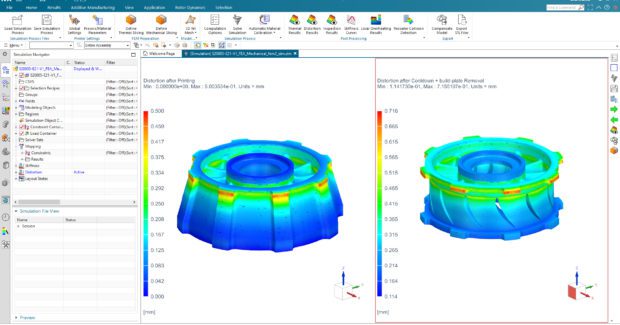Sintavia and Siemens Agree to Collaborate on Accelerating Digital Automation for Industrial Additive Manufacturing
Sintavia will provide Siemens with software testing and technical feedback in exchange for access to pre-released additive manufacturing software.
Posted: October 8, 2020
Sintavia, LLC, (Hollywood, FL) a leading Tier One metal additive manufacturer supporting the aerospace, defense, & space industry, announced it has entered into an agreement to collaborate with Siemens Digital Industries Software on the development of an end-to-end additive manufacturing (AM) software solution as a part of Siemens’ Xcelerator portfolio. Sintavia will provide testing and technical feedback on pre-released software that will be part of future AM solutions. In exchange, Sintavia becomes a preferred AM partner of Siemens and gains access to the software in advance of the market, along with technical support for its implementation.
“We’re excited to be collaborating with Siemens to help make industrialized additive manufacturing a reality,” said Brian Neff, CEO at Sintavia. “The end-to-end solution that Siemens has been developing is absolutely essential to making additive a viable manufacturing process.”
Neff stressed that the value of the Siemens AM solution goes beyond digitally connecting the various phases of the AM process. “We’ve developed a lot of tribal knowledge on how to deliver quality 3D printed metal parts,” he said. “But we recognize that we can’t just rely on individual expertise to meet the accelerating demand in aerospace for additive manufacturing. We need software to codify the processes we undertake, and not just connect them in a digital thread, but automate them, take our know-how and have it drive activities in the background, so we can achieve optimal efficiency.”
Aaron Frankel, vice president of the AM program for Siemens Digital Industries Software, added: “The collaboration with Sintavia is vital to our efforts to develop an automated end-to-end solution that spans the entire AM lifecycle — from designing an optimized part, preparing it 3D printing and simulating its build, to planning serial production, executing on the shop floor, and delivering a qualified part.”
“With their depth of experience and track record in the market,” Frankel continued, “Sintavia can provide the kind of technical feedback we need to build AM know-how into our digital twin and make the system the expert as opposed to the user. This is a critical step to making additive more widely embraced for volume production. Unlike traditional manufacturing, additive is a process where we don’t have decades of established knowledge that is readily communicated, whether in software or through technical education. Companies can’t afford to make everyone in the AM process an expert; they need the software to automate some tasks, work in the background, and make additive more of a push-button process.”
As part of the three-year agreement, the two companies will collaborate on joint sales and marketing activities and plan to organize events at Sintavia’s world-class facility that will showcase Siemens’ AM solution in an industrialized additive production environment.
The companies have agreed that sustainability will be a focus area for their marketing collaboration. In November 2019, Sintavia co-founded the Additive Manufacturer Green Trade Association (AMGTA), a global, non-commercial, unaffiliated nonprofit organization open to any additive manufacturer or industry stakeholder that meets certain criteria relating to sustainability of production, and Siemens joined AMGTA in 2020.
“Siemens has a strong commitment to sustainability – it is a key part of the Siemens 2020+ vision,” said Frankel. “Siemens’ additive manufacturing software contributes to greener additive manufacturing production not just by streamlining designs and reducing material usage, but also by leveraging simulation to help enable first-time-right 3D printing and optimize AM factory efficiency to eliminate waste. We’re excited to join the AMGTA and work closely with Sintavia to help promote the green benefits of additive manufacturing.”




